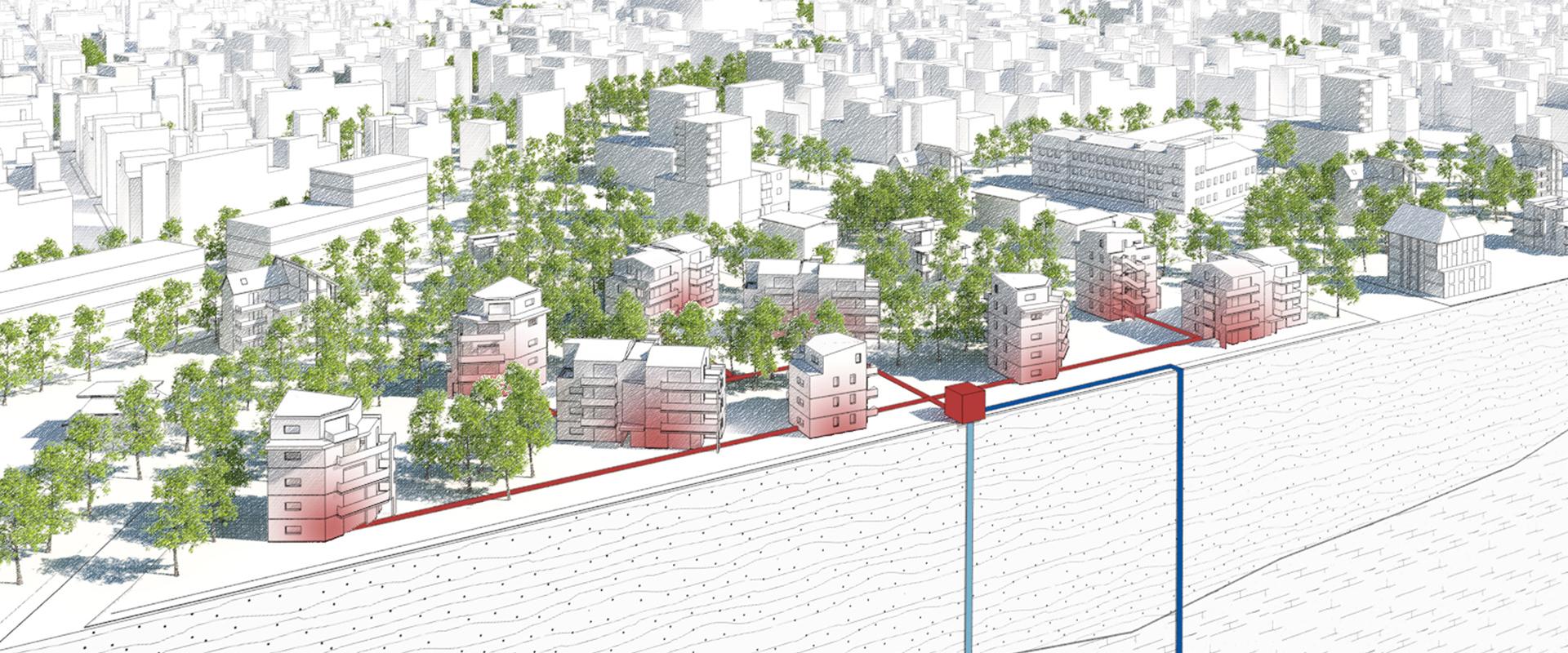Exploring deep geothermal
Transcription
DEEP GEOTHERMAL, THE CARBON-FREE ENERGY OF THE FUTURE
This is Camille. She and her grandfather, Jean, went to a public pool... that is geothermally heated! Jean talks to her about this energy solution of the future... that is not new! That's right! Like many others, he's a responsible boomer. Together, let's learn about deep geothermal energy. Deep geothermal energy uses Earth's natural heat found at depths of over 200 metres. It requires little conventional energy, so greenhouse gas emissions are minimal. As Jean says, it's high-performance energy with a low carbon footprint. It's also competitive energy. Though requiring a significant investment, installations have low operating costs and a long service life. In the end, the total cost is generally lower than that of heat produced by a gas-heating plant. Jean and other consumers receive reasonable heating bills, a bonus in fighting energy poverty! What's more, operating costs remain stable as it is less impacted by price fluctuations in conventional energy. In talking to her grandfather, Camille learned that deep geothermal energy is present in many parts of France. It is produced and consumed in one place as a short supply chain, without transport and the resulting emissions. By reducing gas and oil imports, it contributes to energy self-sufficiency. And the jobs it generates are equally local. Another advantage of geothermal energy is its urban integration. During construction, installations use a big surface area for the drilling platform, which can be used for other purposes after the construction. With limited development impact, it is perfectly adapted to dense urban environments and preserves air quality while being discreet and quiet. Heat networks require cooperation and sharing between territories. Urban heat networks, pools, agriculture, industrial processes... As Camille now knows, geothermal energy has many uses. What's more, this energy is available 24 hours a day, whatever the weather conditions. And while some deep operations in unknown environments may have been problematic, good practice and experience gained over 50 years in "traditional" deep geothermal energy, make it possible to heat hundreds of thousands of people reliably and safely. Jean remembers the first geothermal doublet project. He was 18 when the plant in Melun l'Almont was installed in 1969 to heat 3,300 homes. And it is still in operation! This stable framework and maturity nurture innovation daily increasing the service life of installations and optimizing geothermal resources. Camille wonders about the future. New operations and explorations create prospects for the upcoming years. To reach its carbon emissions reduction goal by 2028, France's strategy is to at least double the amount of heating produced by deep geothermal energy. Grants and incentive schemes exist. So seize this opportunity to develop this green energy in your regions!







